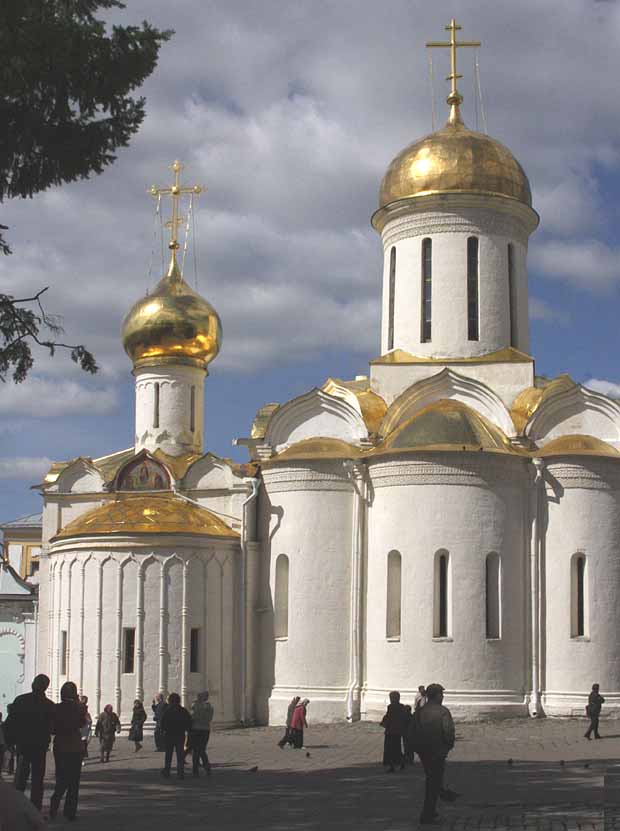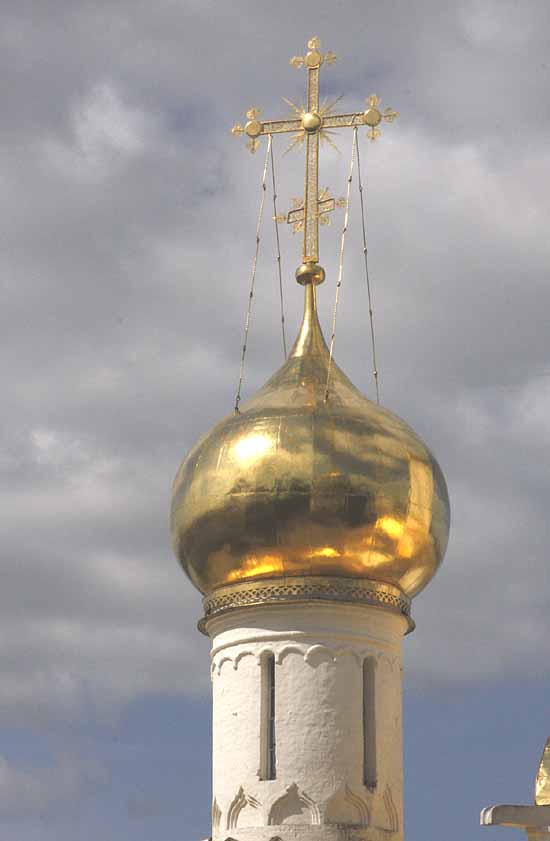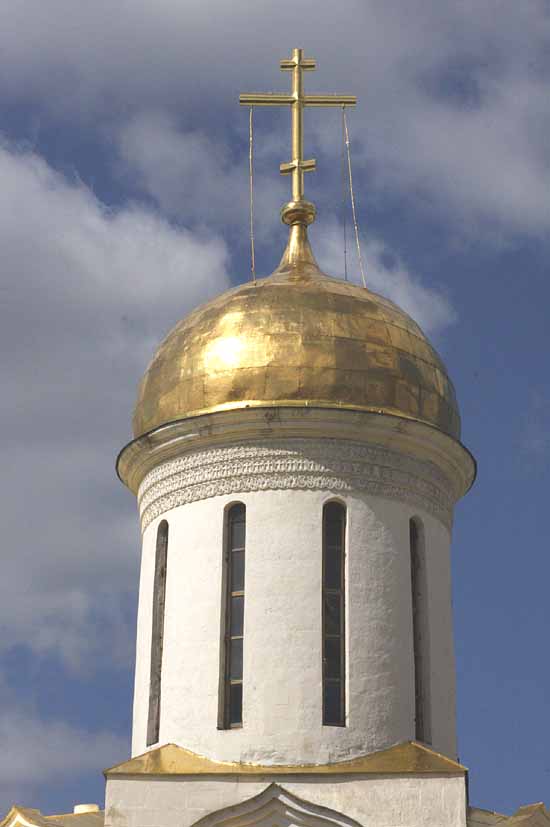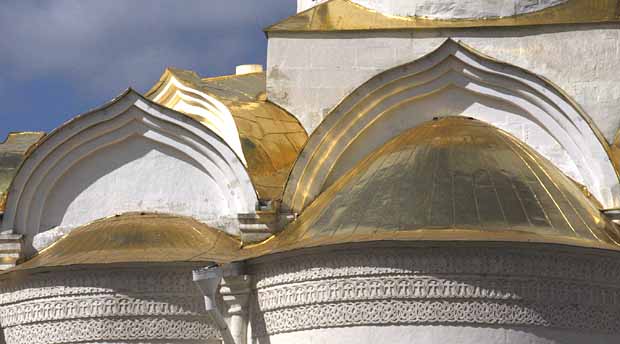|
In the tenth century, when Vladimir I allied Kiev Rus with the Byzantine Empire, it was led by a strong Macedonian Christian dynasty in Constantinople that successfully warred with it's Muslim neighbors and struggled with Rome over control of Balkan politics. In the eleventh century the Seljuq Turks wrested Anatolia from Constantinolple's control and the Christian Crusades were launched to counter Muslim expansion into the Holy Land. In 1204, the Byzantine emperor was unable to meet his debts to the crusaders and the Fourth Crusade sacked Constantinople.
|
|
|
Civil war followed in the fourteenth century and, in the fifteenth century the Ottoman Turks occupied Constantinople. When the last Byzantine emperor died in 1503, Ivan III, the Grand Duke of Moscow, claimed to be the protector of the Orthodox Christian faith and the proper successor to Rome and Constantinople - the Third Rome. Ivan began using the title of czar which the Russians had previously used to refer to the emperor of Byzantium. Czar is the Russian equivalent of caesar.
|
|




